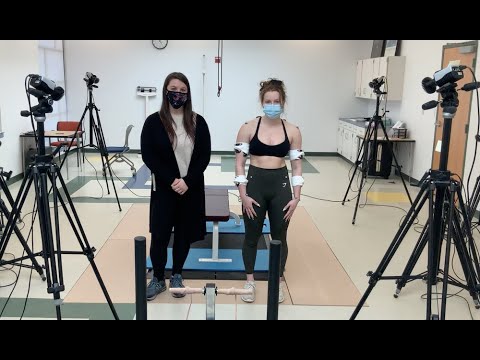Sports such as swimming, tennis and baseball, which involve repetitive overhead arm motions, often lead to imbalances and injury within the muscles surrounding the scapular and shoulder joints, often leading to chronic shoulder pain, especially for swimmers, about 91 percent of whom experience chronic shoulder pain.
Two University of Rhode Island kinesiology graduate students aim to help swimmers prevent and treat the shoulder injury commonly known as swimmer’s shoulder in their master’s thesis study examining the relationship between muscle activation and injury. Tabatha Hartshorn and Kendra Graham — themselves both former competitive swimmers and coaches — compare the muscle activation in swimmers with and without shoulder pain through the catch and pull of the freestyle stroke, during which a swimmer reaches above the head and then pulls with a bent elbow through the water until the arm is parallel with the body.
“We are looking at swimmers’ shoulders to see if there is any differences between swimmers that have reported to have pain or not have pain in their shoulders,†Hartshorn said, noting shoulder pain is often dismissed as merely an overuse injury. “As past swimmers, we both have not only experienced it ourselves, but have seen other athletes experience shoulder pain and not really have a reason why, or it just gets written off. We feel like there’s probably a why behind the pain, and we want to know why.â€
See The University of Rhode Island

Kinesiology study uses motion capture technology to examine ‘swimmer’s shoulder’
Comments
2 responses to “Kinesiology study uses motion capture technology to examine ‘swimmer’s shoulder’”
-
[…] Read More […]
-
[…] Source link […]
Discover more from Swimmer’s Daily
Subscribe to get the latest posts to your email.

Leave a Reply